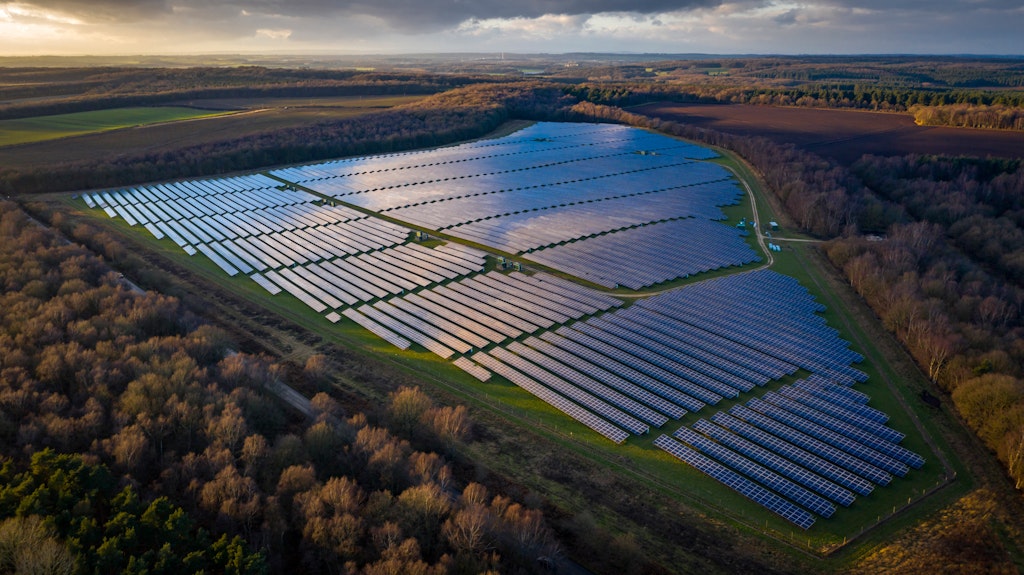The intimacy of thoughts
An excess of technology burdens a cerebral adaptation
How do you render the inner life of the mind — typically the purview of the page — on stage? Katie Mitchell takes up the challenge with her new adaptation of Maggie Nelson’s essayistic Bluets (2009), in the first main stage production of David Byrne’s inaugural season as artistic director of the Royal Court.
Mitchell first staged an adaptation of Nelson’s meditations on the colour blue at Deutsches Schauspielhaus Hamburg in 2019. She now turns to an English adaptation by Margaret Perry (Paradise Now!, Porcelain, Collapsible) — one of nine writers debuting at the Royal Court this season. Perry has used a fraction of the book’s 240 numbered entries, complemented by passages from Nelson’s poetry collection Something Bright, Then Holes. The narrative arc, such as it is, concerns Nelson’s heartbreak over a lover (a “prince of blue”) who falls in love with another woman and her grief for a friend rendered quadriplegic in an accident.
The cast comprises Emma D’Arcy (The Crucible, House of the Dragon), Kayla Meikle (Shoe Lady, ear for eye) and Ben Whishaw (Cock, James Bond, This is Going to Hurt, Paddington). The trio all voice Nelson — representing facets of one individual rather than separate characters in dialogue. It’s a device that Mitchell employed to great effect in directing Miriam Battye’s adaptation of Rebecca Watson’s stream-of-consciousness novel little scratch, staged first at the Hampstead Theatre and then the New Diorama, where Byrne was the founding Artistic Director.
The lines of Bluets are split between the actors along the thought patterns of obsessive, depressive, and “determined to distract”, we learn from the programme. It’s hard to know which is which, however, as the lines are sometimes passed between them mid-sentence, creating a choppy, disjointed feel. Ditto the frenetic prop and costume changes. Technical constraints required Perry to redistribute lines during rehearsals, she has said, depending on which actor was able to get to a standing mic in time to deliver each line. While audiences will be drawn by Whishaw, it’s D’Arcy’s performance that best captures the tone of the source text — a mix of lamentation and riffs on blue with occasional comic relief, mostly related to sex. Whishaw’s physical performance tips towards comedy, while Meikle’s delivery is more affectless than Nelson’s voice on the page.
Reminiscent of a radio play, little scratch relied solely on the actors and live sound effects to convey the thoughts of its narrator throughout a day — keeping the audience’s attention within the confines of the theatre. In Bluets, Mitchell returns to “live cinema”, in which the action is filmed live onstage with the camera equipment visible to the audience and the resulting footage projected above. Although live cinema has become commonplace in the theatre — delighting some theatregoers in productions such as Sunset Boulevard and delighting fewer in Opening Night — it was Mitchell who pioneered the technique in a National Theatre production of Waves, based on Virginia Woolf’s The Waves, in 2006. A few years, that is, before we began to spend our days toggling between screens and life with the advent of the smartphone. Mitchell has continued to employ live cinema, often for adaptations of novels, in almost 20 productions since 2008, staged mainly in Europe.
The result is that Bluets is tech- rather than text-led, with the video directed by Grant Gee and designed by Ellie Thompson. The actors are “sort of like three islands surrounded by a load of tech,” D’Arcy told AnOther Magazine. Filmed backgrounds — such as the Tube, a municipal pool and the hospital room where Nelson’s friend convalesces — are projected onto small screens behind the actors. Their live action is recorded and combined with the backdrops to be projected on a big screen above the stage. While technically impressive, the effect of different footage showing on various screens splinters the viewer’s attention. The actors pulling out their phones only alienates further.
… the competing screens take us outside the intimacy of those thoughts
The aim of live action is “to get the audience close enough to the face of the character so that we believe the thoughts,” Mitchell has said. But the competing screens take us outside the intimacy of those thoughts. The cold ambience of the blue light is mirrored in a mostly melancholy score by Paul Clark, interspersed with tinny renditions of songs by artists such as Joni Mitchell and Billie Holiday. I confess to checking my watch more than once during the 80-minute run time, and relief at emerging into the natural light of Sloane Square to enjoy the rest of my evening outside of Mitchell’s rather fluorescent vision of Nelson’s shades of blues. As Nelson concludes Bluets, rephrasing Simone Weil: “I aimed to be a student not of longing but of light.”
At the Royal Court Jerwood Theatre Downstairs, through 29 June
Enjoying The Critic online? It's even better in print
Try five issues of Britain’s most civilised magazine for £10
Subscribe














